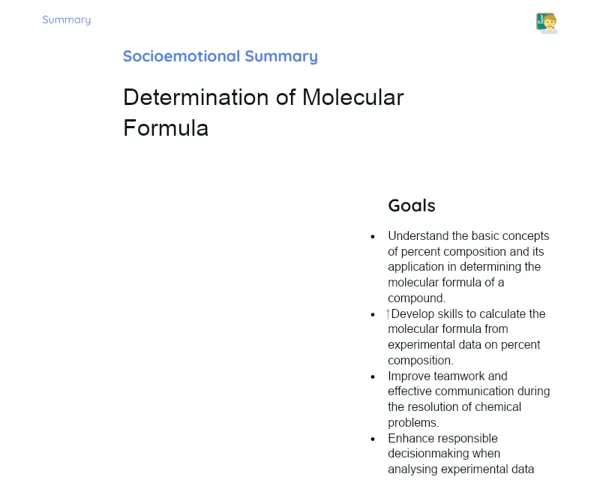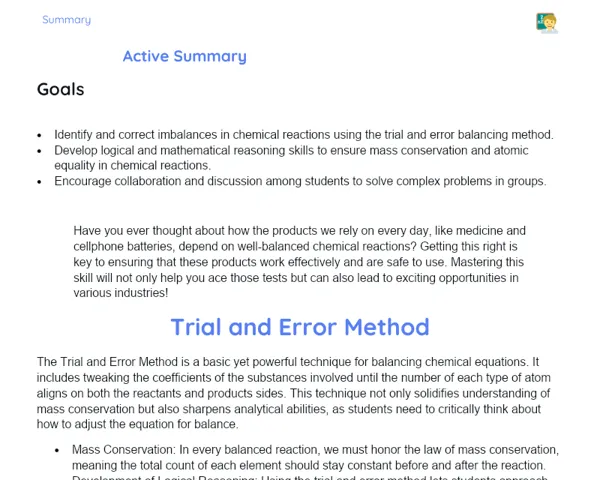Summary Tradisional | Organic Functions: Organic Halide Nomenclature
Contextualization
Organic compounds are fundamental in many areas of chemistry and play a vital role in our daily lives. Among these, organic halides are notable as they contain one or more halogen atoms (like fluorine, chlorine, bromine, and iodine) bonded to a carbon atom. These compounds have diverse applications across various industries, including pharmaceuticals, plastic manufacturing, solvents, and refrigerants. Mastering the proper nomenclature of these compounds as dictated by IUPAC rules is essential for effective communication in chemistry and its practical applications.
A solid grasp of the nomenclature of organic halides enables us to identify and differentiate these compounds from other functional groups in organic chemistry. For instance, chloroform, a methyl halide, was historically used as an anaesthetic, and many pesticides and herbicides incorporate organic halides in their structures, making them invaluable in modern agriculture. In this lesson, we will explore the IUPAC nomenclature rules for organic halides, ensuring you can accurately name these compounds and appreciate their practical uses.
To Remember!
Introduction to Organic Halides
Organic halides refer to compounds with one or more halogen atoms (F, Cl, Br, I) attached to a carbon atom. These halogens replace one or more hydrogen atoms in the original hydrocarbon structure. The inclusion of halogens imparts distinct properties to these compounds, making them useful in a wide array of industrial and scientific applications.
Organic halides have numerous practical uses. In the pharmaceutical sector, for example, they are often used as intermediates in drug synthesis. In the plastics industry, these compounds play a crucial role in producing robust polymers. Additionally, organic halides are utilised as solvents in chemical processes and as refrigerants in air conditioning and refrigeration systems.
Identifying organic halides is based on detecting halogen atoms and understanding the structure of the associated carbon chain. Grasping the composition and properties of these compounds is key to naming them appropriately and recognising their functions in various industrial and scientific settings.
-
Compounds that contain halogen atoms (F, Cl, Br, I) bonded to carbon atoms.
-
Applications in pharmaceuticals, plastics, solvents, and refrigerants.
-
Identification relies on the presence of halogens and the carbon chain structure.
Identifying Organic Halides
To identify organic halides, one must look for the presence of halogen atoms in the compound's structure. Halogens like fluorine, chlorine, bromine, and iodine are highly reactive and replace hydrogen atoms in the carbon chain. The position and number of halogen atoms are crucial, as they directly affect the properties and reactivity of these compounds.
Common examples include chloromethane (CH3Cl), bromobenzene (C6H5Br), and ethyl iodide (C2H5I). Each compound showcases a specific halogen attached to different carbon chain structures, illustrating the variety of compounds within this classification.
Accurately identifying organic halides is fundamental for applying IUPAC nomenclature rules. Understanding the compound’s structure permits the identification of the main chain, appropriate numbering of the carbons, and pinpointing the location of halogens, which is essential for precise naming.
-
Identifying the presence of halogen atoms in the compound's structure.
-
Examples include chloromethane, bromobenzene, and ethyl iodide.
-
Correct identification is vital for proper IUPAC nomenclature.
IUPAC Nomenclature for Organic Halides
The IUPAC nomenclature system for organic halides follows specific rules that ensure clarity and precision in scientific communication. The first step is identifying the main carbon chain, which is the longest chain containing the halogens. Then, the carbons in the main chain are numbered in a way that gives the halogens the lowest possible numbers.
Halogen atoms are denoted by specific prefixes: fluoro- (F), chloro- (Cl), bromo- (Br), and iodo- (I). These prefixes precede the name of the corresponding alkane for the main chain. For instance, CH3-CH2-CH2-Cl is named 1-chloropropane, where 'chloro-' denotes the presence of a chlorine atom and 'propane' signifies the three-carbon main chain.
Furthermore, when multiple halogens are present, prefixes such as di-, tri-, tetra-, etc., are employed to indicate the number of halogen atoms. The location of each halogen is marked by numbers separated by commas, and they are listed in alphabetical order. Examples include 2,3-dibromobutane and 1-iodo-2-methylpropane.
-
Identify the main carbon chain.
-
Number the carbons so halogens receive the lowest numbers.
-
Use specific prefixes for halogens: fluoro-, chloro-, bromo-, iodo-.
-
Indicate multiple halogens with prefixes like di-, tri-, tetra-, etc.
Comparison with Other Organic Compounds
The nomenclature of organic halides varies significantly from that of other organic compounds, such as alcohols, carboxylic acids, and ethers. For example, alcohols are named by replacing the suffix -ane from the corresponding alkane with -ol to indicate the presence of a hydroxyl group (-OH). An example is ethanol (CH3-CH2-OH), where '-ol' indicates the hydroxyl group.
Conversely, the nomenclature for organic halides employs prefixes to signify the presence of halogens, as in chloroethane (CH3-CH2-Cl), where 'chloro-' comes before the alkane name. These distinctions are crucial to prevent misunderstandings and ensure accuracy in scientific conversations.
Additionally, organic halides and other organic compounds exhibit unique properties and reactivities. Halides are typically more reactive due to the polarity of the carbon-halogen bonds, while alcohols, for instance, possess solubility in water because of the hydroxyl group.
-
Difference in nomenclature between organic halides and other compounds like alcohols and carboxylic acids.
-
Alcohols utilise the suffix -ol while halides use prefixes such as chloro-, bromo-, etc.
-
Distinct properties and reactivities differentiate halides from other organic compounds.
Key Terms
-
Organic Halides: Compounds with one or more halogen atoms (F, Cl, Br, I) bonded to carbon.
-
IUPAC Nomenclature: A systematic method for accurately naming chemical compounds.
-
Chloromethane: An organic halide with one chlorine atom attached to methane (CH3Cl).
-
Bromobenzene: An organic halide where a bromine atom attaches to a benzene ring (C6H5Br).
-
Halogen Prefixes: Terms indicating the presence of halogens like fluoro-, chloro-, bromo-, iodo-.
-
Hydroxyl Group: A functional group (-OH) found in alcohols, contrasting with halides.
Important Conclusions
Organic halides are compounds that include one or more halogen atoms (fluorine, chlorine, bromine, iodine) bonded to a carbon atom. They are crucial across multiple industries, including pharmaceuticals, plastics, and refrigeration. Understanding the IUPAC nomenclature of these compounds is vital for accurate scientific discourse and practical implementation in various fields.
The IUPAC nomenclature for organic halides includes identifying the main carbon chain, appropriately numbering the carbons to ensure the halogens have the lowest possible numbers, and using specific prefixes to denote the presence of halogens. Practical examples like 1-chloropropane and 2,3-dibromobutane reinforce comprehension of these rules.
Moreover, contrasting the nomenclature of organic halides with that of other compounds, such as alcohols and carboxylic acids, highlights the unique aspects of each functional group. This knowledge is essential to mitigate confusion and ensure clarity in scientific dialogue. The reactivity and unique properties of organic halides are additional critical considerations in their practical applications.
Study Tips
-
Review the practical examples discussed in class and practice naming other compounds according to IUPAC nomenclature for organic halides.
-
Make use of further resources, like organic chemistry textbooks and educational websites, to gain deeper insights into the properties and applications of organic halides.
-
Practice comparing the nomenclature of organic halides with other organic compounds, such as alcohols and carboxylic acids, to strengthen understanding of their differences and similarities.


